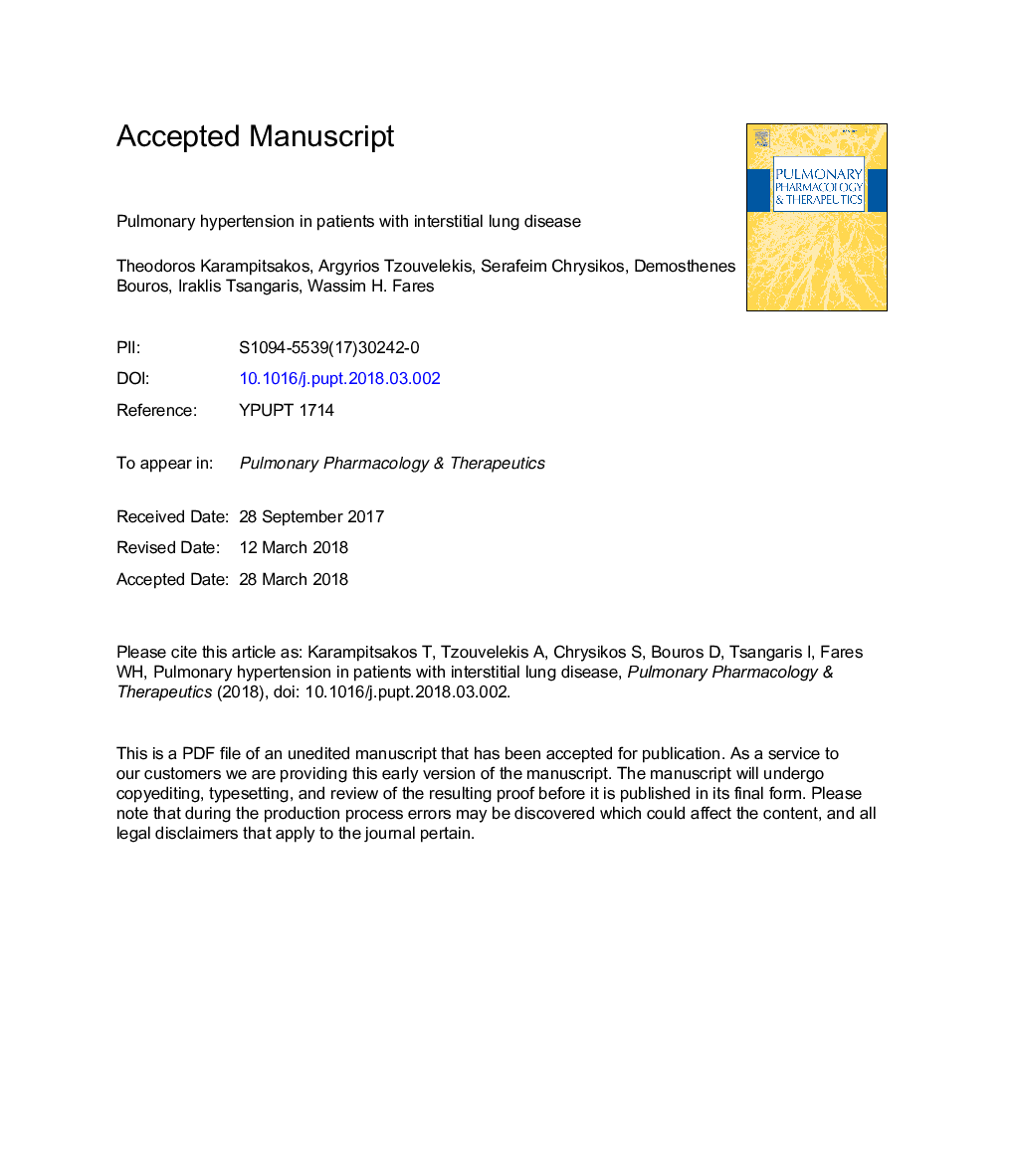| Article ID | Journal | Published Year | Pages | File Type |
|---|---|---|---|---|
| 8537699 | Pulmonary Pharmacology & Therapeutics | 2018 | 35 Pages |
Abstract
Interstitial lung diseases (ILDs) comprise a broad and heterogeneous group of more than two hundred diseases with common functional characteristics. Their diagnosis and management require a multidisciplinary approach. This multidisciplinary approach involves the assessment of comorbid conditions including pulmonary hypertension (PH) that exerts a dramatic impact on survival. The current World Health Organization (WHO) classification of PH encompasses many of the interstitial lung diseases into WHO Group 3, while sarcoidosis, Pulmonary Langerhans Cell Histiocytosis and lymphangioleiomyomatosis are placed into WHO Group 5 as diseases with unclear or multifactorial mechanisms. Connective tissue diseases could span any of the 5 WHO groups based on the primary phenotype into which they manifest. Interestingly, several challenging phenotypes present with features that overlap between two or more WHO PH groups. Currently, PH-specific treatment is recommended only for patients classified into WHO Group 1â¯PH. The lack of specific treatment for other groups, including PH in the setting of ILD, reflects the poor outcomes of these patients. Thus, identification of the optimal strategy for ILD patients with PH remains an amenable need. This review article provides a brief overview of biomarkers indicative of vascular remodeling in interstitial lung disease, summarizes the current state of knowledge regarding patients with PH and ILD and highlights future perspectives that remain to be addressed.
Related Topics
Health Sciences
Medicine and Dentistry
Pulmonary and Respiratory Medicine
Authors
Theodoros Karampitsakos, Argyrios Tzouvelekis, Serafeim Chrysikos, Demosthenes Bouros, Iraklis Tsangaris, Wassim H. Fares,
